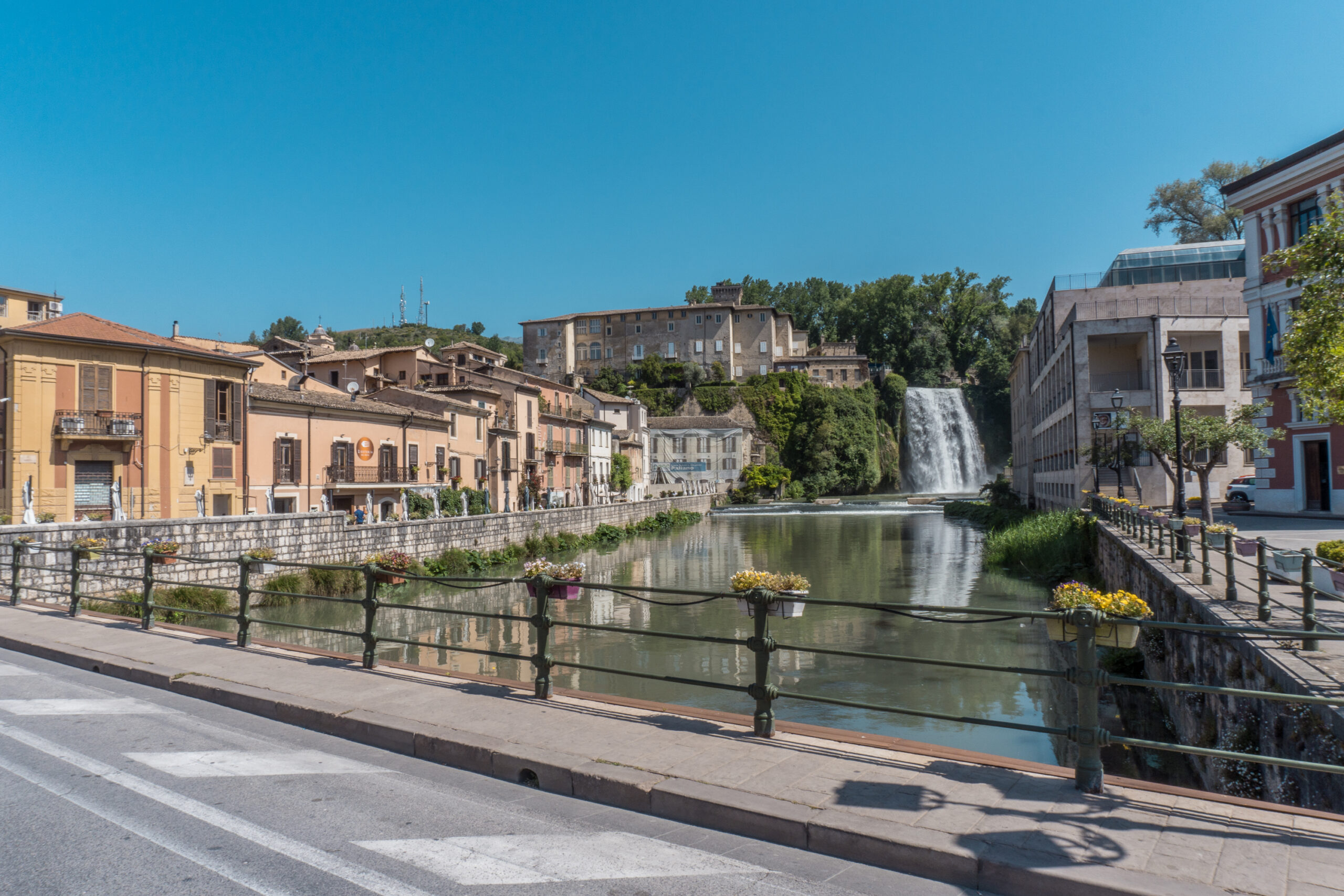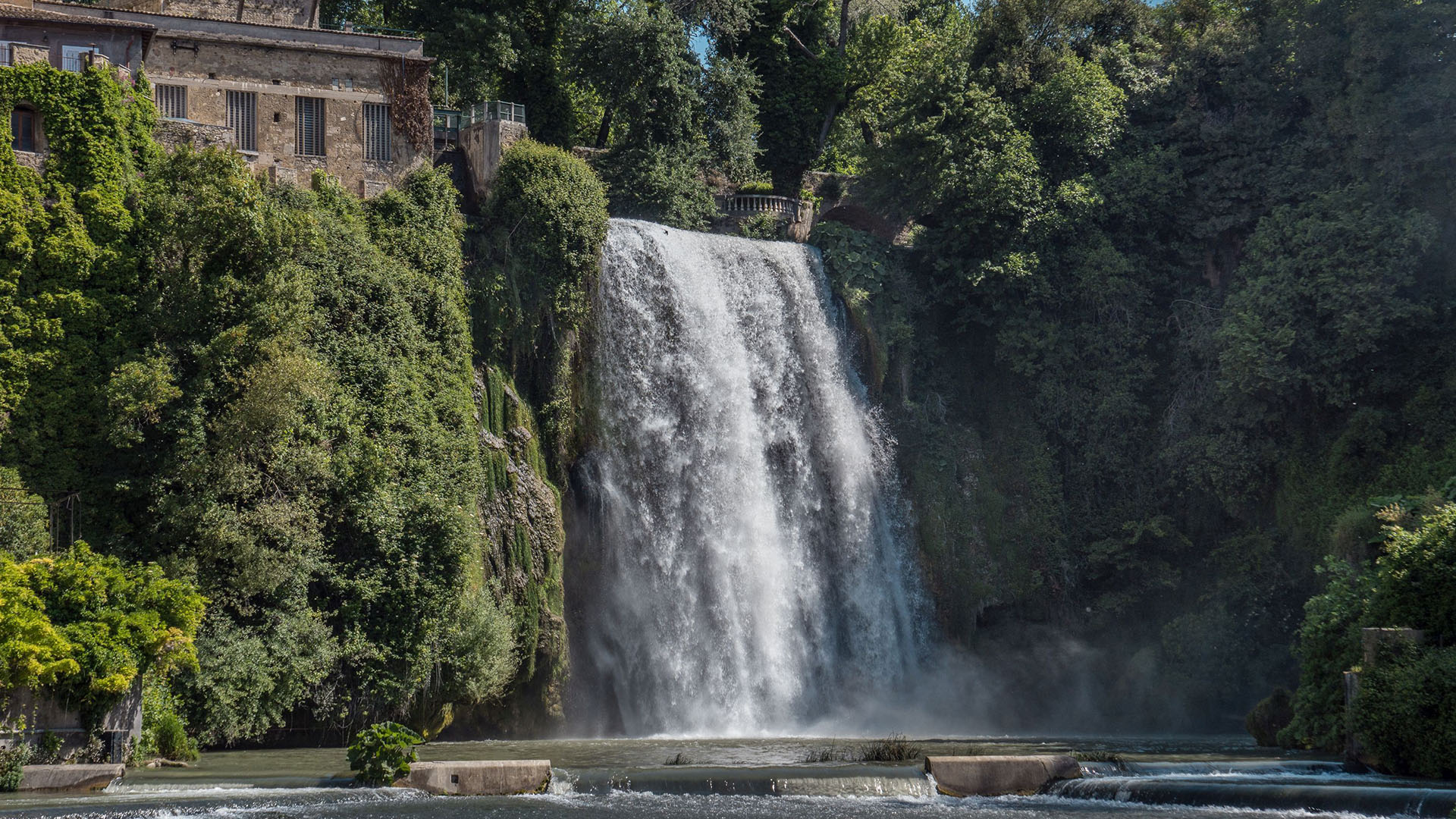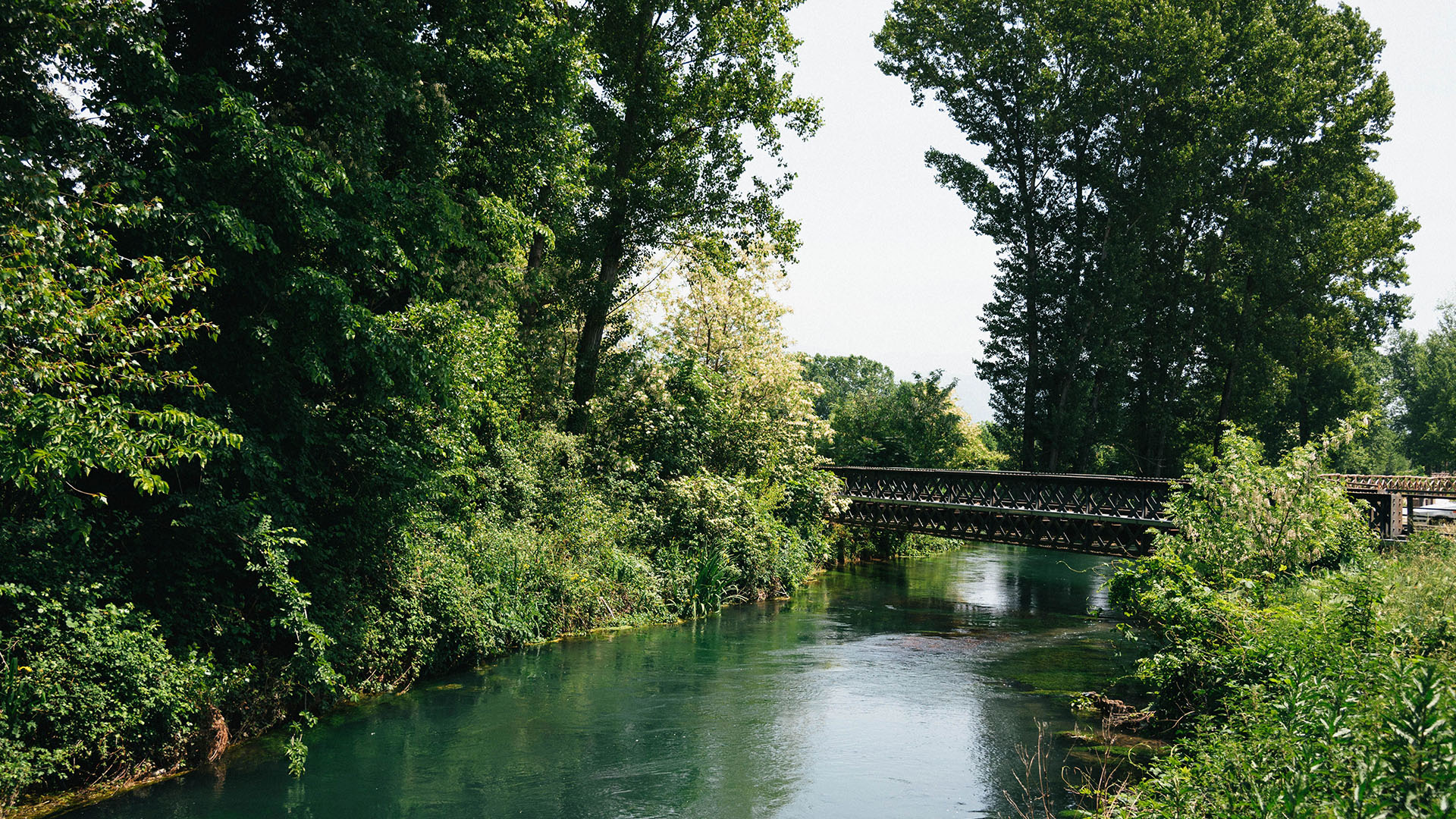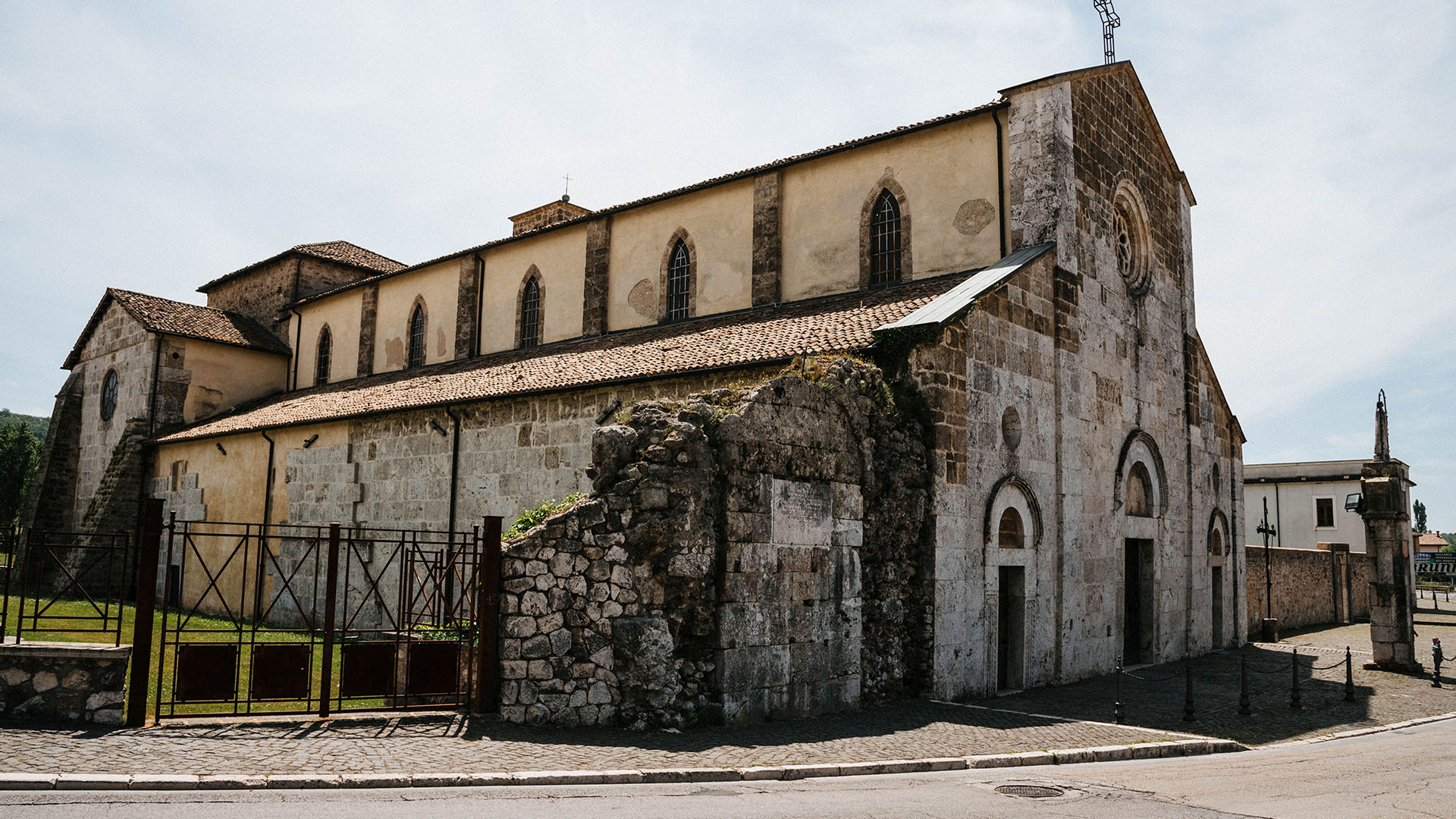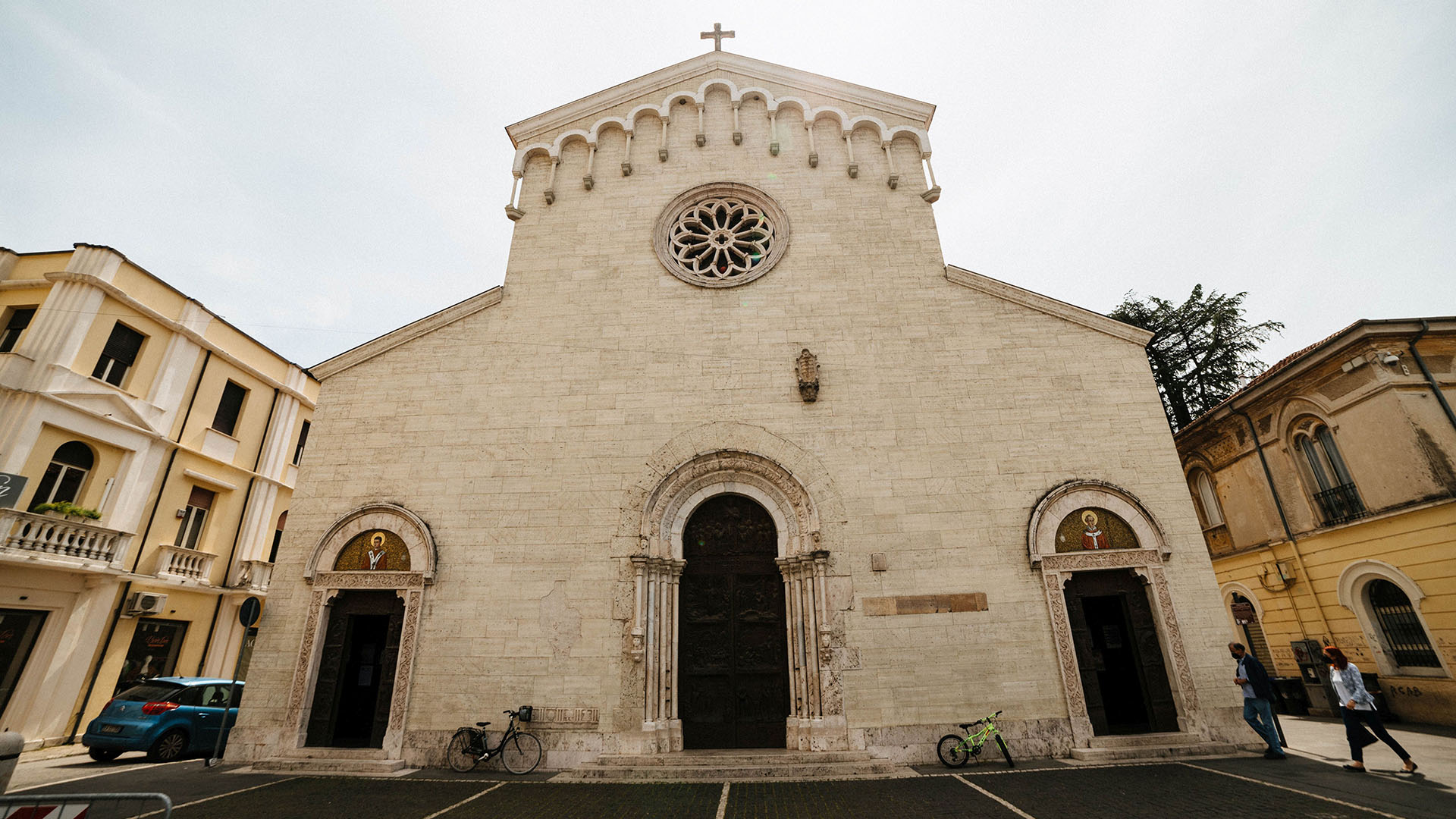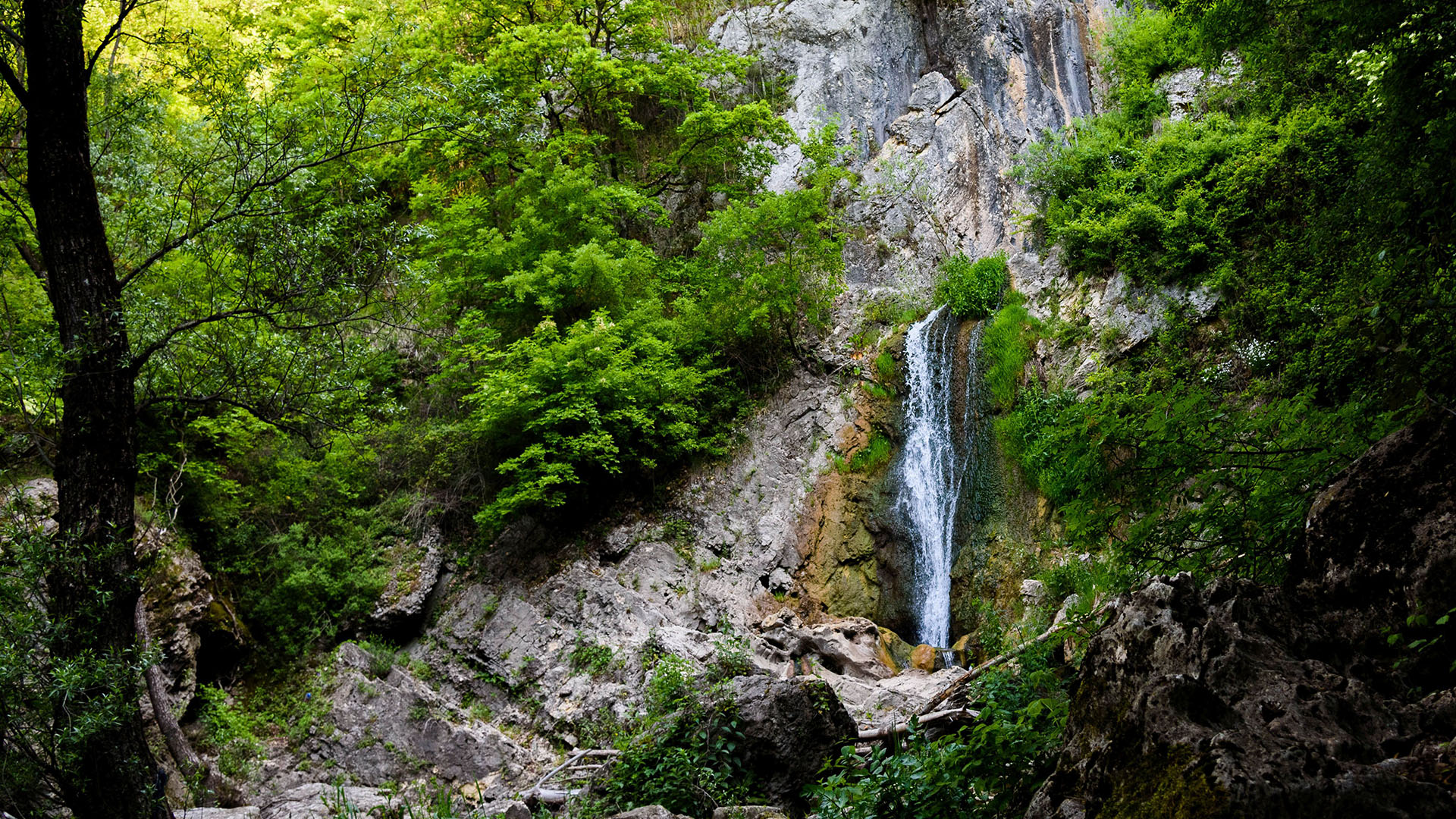The thrill of a train journey with the bike in tow until you reach the Liri’s springs, to descend the initial section of the river along the sparsely used roads, always with the river and the railroad which cross several times and telling stories of high engineering in a territory that is sometimes wild. Once you get off the train and set up your bike, you can visit the places where the emissary of Claudius, a Roman work created to empty the lake of Fucino, flows into the Liri with an imposing waterfall from where you reach the middle LirI Valley with a pleasant ride. Where the valley spreads on a plain rich in water, you can appreciate the beauty of the historical centre of Sora, an ancient Volscian city and Roman municipium, up to the old abbey of San Domenico and the medieval village of Isola del Liri with the Cascata Grande.
The river and the railway
si
The railway station is located in the upper part of the town, about 2 km from the Liri waterfalls and at km 24 of the Roccasecca – Avezzano railway. The line is ordinary gauge, not electrified and connects the lower Liri valley to Abruzzo. The station came into operation in 1897 and was an important freight yard serving the many paper mills in the area throughout the 20th century.
si
The railway station is located in the upper part of the town, about 2 km from the Liri waterfalls and at km 24 of the Roccasecca – Avezzano railway. The line is ordinary gauge, not electrified and connects the lower Liri valley to Abruzzo. The station came into operation in 1897 and was an important freight yard serving the many paper mills in the area throughout the 20th century.
si
si
si
si
This is an imposing hydraulic work of the Roman age, about six kilometres long, which starts in the territory of Avezzano and ends in the ancient village of Capistrello. It consists of a long underground canal, with six tunnels and 32 wells, which Emperor Claudius had built between 41 and 52 AD to drain Lake Fucino, limiting its periodic flooding and obtaining new fertile land for cultivation. With the fall of the Roman Empire, there was no maintenance and the tunnel was obstructed until the second half of the 19th century, when Prince Alessandro Torlonia was able to unearth the lands of the current Fucino basin by building a new canal that largely follows the route of the Claudian tunnel.
This is an imposing hydraulic work of the Roman age, about six kilometres long, which starts in the territory of Avezzano and ends in the ancient village of Capistrello. It consists of a long underground canal, with six tunnels and 32 wells, which Emperor Claudius had built between 41 and 52 AD to drain Lake Fucino, limiting its periodic flooding and obtaining new fertile land for cultivation. With the fall of the Roman Empire, there was no maintenance and the tunnel was obstructed until the second half of the 19th century, when Prince Alessandro Torlonia was able to unearth the lands of the current Fucino basin by building a new canal that largely follows the route of the Claudian tunnel.
si
si
Sora is an elegant town lying along the banks of the Liri River, on the boundary between Latium and Abruzzo. It is dominated by the Renaissance fortress of San Casto and still retains the characteristic artisan workshops in the Cancèglie district, the oldest part of the old town. In its territory is the beautiful Abbey of San Domenico, founded in 1011 in the area of the villa where Marcus Tullius Cicero was born.
Sora is an elegant town lying along the banks of the Liri River, on the boundary between Latium and Abruzzo. It is dominated by the Renaissance fortress of San Casto and still retains the characteristic artisan workshops in the Cancèglie district, the oldest part of the old town. In its territory is the beautiful Abbey of San Domenico, founded in 1011 in the area of the villa where Marcus Tullius Cicero was born.
si
si
According to tradition, the Abbey of San Domenico was founded in 1011 by San Domenico da Foligno near the birthplace of the famous orator Marcus Tullius Cicero, along the Fibreno river.
According to tradition, the Abbey of San Domenico was founded in 1011 by San Domenico da Foligno near the birthplace of the famous orator Marcus Tullius Cicero, along the Fibreno river.
si
si
The paper mill was founded in 1812 by the French Carlo Antonio Beranger in the suppressed convent of Santa Maria delle Forme, obtained in concession from the French government in Naples, next to the third waterfall of Isola. Subsequently purchased by Lefebvre and became Cartiera del Fibreno, it came to employ 200 workers and was visited, among others, by Ferdinand II of Bourbon and by the German historian Gregorovius.
The paper mill was founded in 1812 by the French Carlo Antonio Beranger in the suppressed convent of Santa Maria delle Forme, obtained in concession from the French government in Naples, next to the third waterfall of Isola. Subsequently purchased by Lefebvre and became Cartiera del Fibreno, it came to employ 200 workers and was visited, among others, by Ferdinand II of Bourbon and by the German historian Gregorovius.
si
si
The town of Isola del Liri owes its name to the fact that the inhabited centre is located on an island formed by the Liri river, which, meeting a travertine bank at the height of the Boncompagni-Viscogliosi castle, splits into two branches that form the Cascata del Valcatoio and the Cascata Grande, right in the urban area.
The town of Isola del Liri owes its name to the fact that the inhabited centre is located on an island formed by the Liri river, which, meeting a travertine bank at the height of the Boncompagni-Viscogliosi castle, splits into two branches that form the Cascata del Valcatoio and the Cascata Grande, right in the urban area.
si
si
si
The railway station is located in the upper part of the town, about 2 km from the Liri waterfalls and at km 24 of the Roccasecca – Avezzano railway. The line is ordinary gauge, not electrified and connects the lower Liri valley to Abruzzo. The station came into operation in 1897 and was an important freight yard serving the many paper mills in the area throughout the 20th century.
si
The railway station is located in the upper part of the town, about 2 km from the Liri waterfalls and at km 24 of the Roccasecca – Avezzano railway. The line is ordinary gauge, not electrified and connects the lower Liri valley to Abruzzo. The station came into operation in 1897 and was an important freight yard serving the many paper mills in the area throughout the 20th century.
si
si
si
si
This is an imposing hydraulic work of the Roman age, about six kilometres long, which starts in the territory of Avezzano and ends in the ancient village of Capistrello. It consists of a long underground canal, with six tunnels and 32 wells, which Emperor Claudius had built between 41 and 52 AD to drain Lake Fucino, limiting its periodic flooding and obtaining new fertile land for cultivation. With the fall of the Roman Empire, there was no maintenance and the tunnel was obstructed until the second half of the 19th century, when Prince Alessandro Torlonia was able to unearth the lands of the current Fucino basin by building a new canal that largely follows the route of the Claudian tunnel.
This is an imposing hydraulic work of the Roman age, about six kilometres long, which starts in the territory of Avezzano and ends in the ancient village of Capistrello. It consists of a long underground canal, with six tunnels and 32 wells, which Emperor Claudius had built between 41 and 52 AD to drain Lake Fucino, limiting its periodic flooding and obtaining new fertile land for cultivation. With the fall of the Roman Empire, there was no maintenance and the tunnel was obstructed until the second half of the 19th century, when Prince Alessandro Torlonia was able to unearth the lands of the current Fucino basin by building a new canal that largely follows the route of the Claudian tunnel.
si
si
Sora is an elegant town lying along the banks of the Liri River, on the boundary between Latium and Abruzzo. It is dominated by the Renaissance fortress of San Casto and still retains the characteristic artisan workshops in the Cancèglie district, the oldest part of the old town. In its territory is the beautiful Abbey of San Domenico, founded in 1011 in the area of the villa where Marcus Tullius Cicero was born.
Sora is an elegant town lying along the banks of the Liri River, on the boundary between Latium and Abruzzo. It is dominated by the Renaissance fortress of San Casto and still retains the characteristic artisan workshops in the Cancèglie district, the oldest part of the old town. In its territory is the beautiful Abbey of San Domenico, founded in 1011 in the area of the villa where Marcus Tullius Cicero was born.
si
si
According to tradition, the Abbey of San Domenico was founded in 1011 by San Domenico da Foligno near the birthplace of the famous orator Marcus Tullius Cicero, along the Fibreno river.
According to tradition, the Abbey of San Domenico was founded in 1011 by San Domenico da Foligno near the birthplace of the famous orator Marcus Tullius Cicero, along the Fibreno river.
si
si
The paper mill was founded in 1812 by the French Carlo Antonio Beranger in the suppressed convent of Santa Maria delle Forme, obtained in concession from the French government in Naples, next to the third waterfall of Isola. Subsequently purchased by Lefebvre and became Cartiera del Fibreno, it came to employ 200 workers and was visited, among others, by Ferdinand II of Bourbon and by the German historian Gregorovius.
The paper mill was founded in 1812 by the French Carlo Antonio Beranger in the suppressed convent of Santa Maria delle Forme, obtained in concession from the French government in Naples, next to the third waterfall of Isola. Subsequently purchased by Lefebvre and became Cartiera del Fibreno, it came to employ 200 workers and was visited, among others, by Ferdinand II of Bourbon and by the German historian Gregorovius.
si
si
The town of Isola del Liri owes its name to the fact that the inhabited centre is located on an island formed by the Liri river, which, meeting a travertine bank at the height of the Boncompagni-Viscogliosi castle, splits into two branches that form the Cascata del Valcatoio and the Cascata Grande, right in the urban area.
The town of Isola del Liri owes its name to the fact that the inhabited centre is located on an island formed by the Liri river, which, meeting a travertine bank at the height of the Boncompagni-Viscogliosi castle, splits into two branches that form the Cascata del Valcatoio and the Cascata Grande, right in the urban area.
si
si









